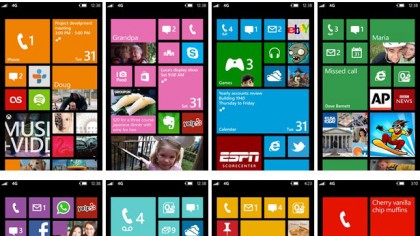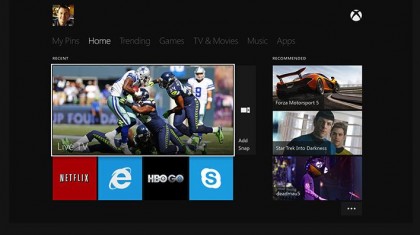Microsoft on WP8, Build 2013 and how it will win the cheap phone wars

Microsoft skipped out on making major announcements at this year's CTIA, but in a catacomb of meeting rooms beneath the main show floor, Senior Marketing Manager Greg Sullivan made sure the company and its Windows Phone 8 weren't forgotten.
Sullivan's energy about WP8 was palpable; he quickly pointed to IDC figures that show Windows Phone has overtaken BlackBerry for the third spot in the mobile OS race. It's still far beyond Android and iOS, but that did nothing to dampen Sullivan's spirits.
"There's still room to go to get to the top two, but it's one of the dimensions in momentum we're seeing around the platform," he said.
First things were first, however. With no big news at CTIA, we wanted to know why we should pay attention to the mobile operating system during Build 2013, Microsoft's major developer conference taking place in just over a month.
"There will be some talk about [Windows Phone 8] from an app platform standpoint," Sullivan said coyly, noting that Microsoft is taking a different approach to how it addresses updates and issues around the platform in general.
"We used to be in the business of telling you about the next version a year in advance. We're doing less of that, partly because what we have in the market today competes very, very favorably and we feel great about it. So we don't feel like we need to promise what's coming next year. Even to developers, we'll say, 'Let's focus on what we have today because it's one of the best out there.'"

Deep ties
Sullivan steered away from other specifics, but as the reveal of Windows 8.1 draws nearer, expectations are that an update known as Windows Phone Blue (or Windows Phone 8.1) is also on the horizon.
Sign up for breaking news, reviews, opinion, top tech deals, and more.
He explained that as the core of Windows is updated, the Windows Phone engineering team builds out the services that go along with their particular platform.
"[Windows Phone] can have lots of updates that don't necessarily relate to the core, but when that core gets updated, we'll take that, and we'll continue to be in alignment with them."
Those who followed this week's Xbox One announcement may have noticed the new console's UI reflects Microsoft's hallmark Metro design, and picked up that there's a kernel of Windows within the system's architecture.

Xbox of course isn't alone among Microsoft's products in having both. With a unified look and a shared core, Sullivan indicated there's more that can be done to mesh the company's products and services with one another.
"We had a group of designers that collaborate across the whole company that thought long and hard about what our point of view is and what are our principles around design. They relate to the interface that first showed up in Windows Phone but is now in Xbox and Windows Phone 8 and web services.
"So you're seeing this consistency on the user experience level, and you're seeing increasingly a compatibility across the app level and a leveraging of the tools and the code that developers can use to target the range of our platforms.
"We're tying our stuff together up and down the stack and across the elements that nobody else is able to, and that's going to be a competitive advantage more and more as we go along."
On the cheap
In the last few weeks, Nokia has debuted two new phones - the Lumia 925 and Lumia 928 - while putting the Lumia 521 up for sale directly on T-Mobile (it's been sold through HSN and Wal-mart already). The 521 is the U.S. variant of the globally available Lumia 520.
Numerically confusing names aside, with a rush of new phones, might Microsoft be concerned in tipping into over saturation? No, said Sullivan.

Michelle was previously a news editor at TechRadar, leading consumer tech news and reviews. Michelle is now a Content Strategist at Facebook. A versatile, highly effective content writer and skilled editor with a keen eye for detail, Michelle is a collaborative problem solver and covered everything from smartwatches and microprocessors to VR and self-driving cars.